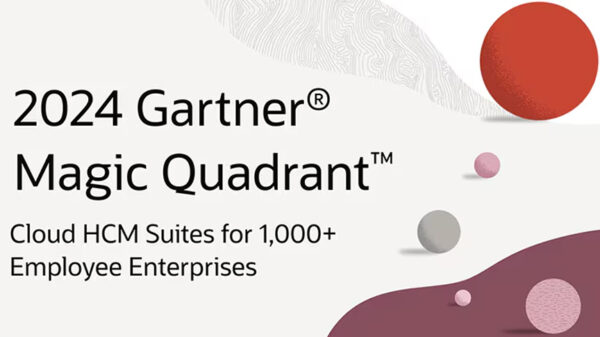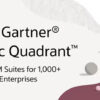By Chung Heng Han, Vice President, Systems, Oracle Asia Pacific
Cloud Computing is increasingly the deployment model of choice for enterprise workloads, causing public cloud spend to grow at a double-digit rate with no sign of slowing down. The issue is that most companies realize they can’t transition everything at once – even if they wanted to – leaving IDC to predict that 58.7 percent infrastructure spend in 2017 will stay in the data center.
Regardless, the pressure is on and companies can’t afford to sit back and wait. The rising incidence of cyberattacks is making many companies re-evaluate their position on cloud; a recent Oracle survey showed that companies with a higher level of cloud maturity and exposure have higher levels of confidence in their cyber security capabilities and ability to detect cyber threats, than those early in their cloud journey.
In addition, organizations are striving to deliver innovation in unprecedented ways and, to support this, are looking for new ways of handling the increasing amount of data they are having to deal with every day. It is therefore very important that organizations take into consideration ways to handle the increasing amount of data being transferred into their systems every day. Having said this, finding the right application on platforms suitable to your company’s needs is essential. With business leaders pushing hard for cloud migration, how should IT leaders respond?
Plan for Tomorrow
There are a myriad of reasons for keeping applications in-house, such as regulatory compliance issues, security, data sovereignty requirements, the need for low latency, and use of custom legacy applications that won’t run on public cloud platforms.
In many cases, what is needed is a cloud-ready architecture – including hardware operating systems, databases, and applications – that is consistent across on-premises and cloud environments. This will make it easier to transition when the time is right.
Mapping your cloud-ready journey: While the route will vary, depending on where an individual IT organization is starting, there are five typical use cases that describe the different requirements of each leg – and thus, the likely best path forward.
1. Streamline and modernize IT infrastructure
For a business without immediate plans to move to the cloud, but wants to streamline its infrastructure, pre-built converged infrastructure.
These modern systems that are architecturally compatible with those powering private cloud and public cloud services can deliver dramatic improvements in performance, availability, security, and efficiency while lowering operating costs, by replacing older, multi-vendor server, storage, and backup.
2. Accelerate time to value with appliances
Many IT organizations have to do more with less, and faster, to respond to competitive threats. In such situations, an appliance strategy can provide great benefit. Purpose built ‘appliances’ that are preconfigured to serve different purposes, such as to support databases, a private cloud environments, or big data workloads. They are easy to deploy and operate, requiring less time and fewer specialized IT skills.
3. Optimize and extend private cloud
For generic, noncritical workloads, many organizations first implement private cloud environments with the aim of lowering costs and achieving greater agility.
But most self-assembled, generic private clouds take months to build – decreasing agility – and require expensive personnel to build, tune, and manage.
Private cloud environments also often use virtualization software that may require expensive licenses and support contracts to run. Another challenge is that generic private clouds often treat all applications equally, they are not always appropriate for demanding and/or business-critical databases and applications.
One way to address these issues is to adopt purpose-built, cloud appliances that are consistent across environments, enabling organizations to implement a private cloud that is cost-optimized for generic applications and performance optimized for more critical applications. This provides an easy path to public or hybrid cloud, with unified management across environments.
4. Optimize and secure critical applications
For business-critical applications, in many cases, the infrastructure supporting them has been built over time, lags in modernization, and is an inconsistent mix of platforms.
The result is an overly complex environment that doesn’t always deliver the required performance or security. A common solution is to employ high-end servers to optimize and ensure peak performance while improving efficiency with the highest security, whether implemented on-premises or in the cloud. Moving to a single platform will also bring cost savings and unified management.
5. Consolidate and protect data with advanced storage solutions
Finally, companies are facing data storage and protection challenges. With the explosion of data volumes, simply adding to an existing storage infrastructure is, in many cases, no longer affordable or cost-effective.
An alternative approach is to implement modern storage solutions engineered to address the risks of data loss and cut recovery times. These cloud-ready systems enable you to consolidate existing storage while ensuring the security of your data and dramatically improving performance.
Future
For each of these use cases, having cloud-ready systems that have equivalents in the public cloud can allow the public cloud to appear as a compatible extension of what already runs in your data center, making it easier to move when you’re ready.
The most powerful, unified cloud solutions available that best match your licensed environment and will help you modernize, innovate, and be one step ahead in a digital world. Complete and integrated cloud services can now deliver unprecedented availability, performance, and security — potentially at a significantly lower cost.
Even if you have no immediate plans to move to the cloud, it’s a nice option to have. In the meantime, you’re able to bring many benefits of the public cloud into your on-premises infrastructure. Wouldn’t you like to be prepared for a cloud future?

















































































































